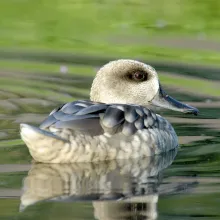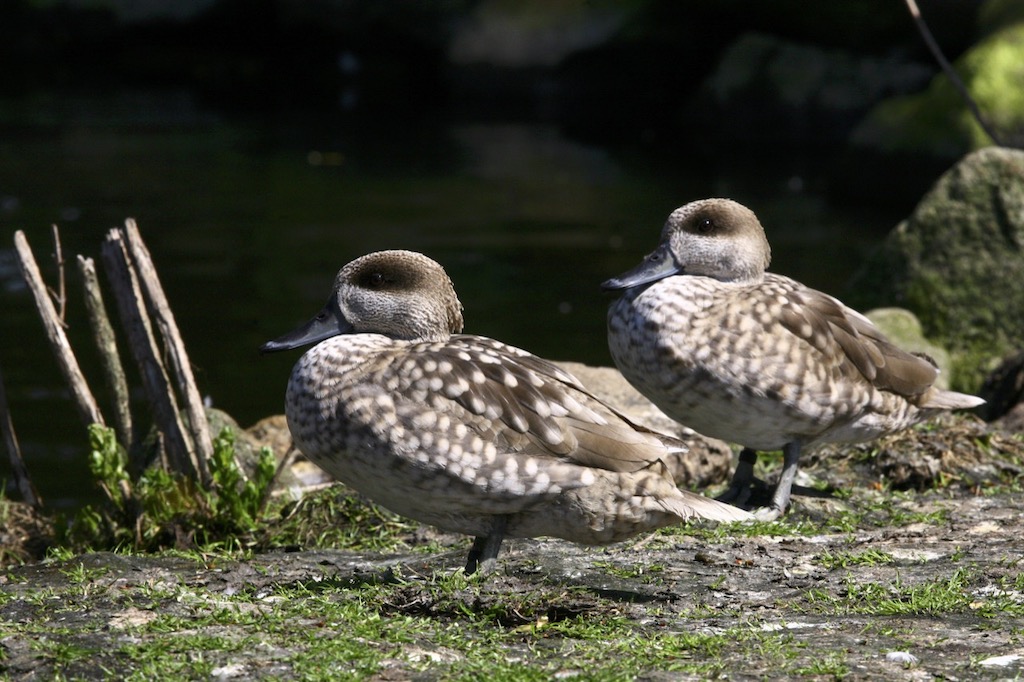
Marbled Teal (Marmaronetta angustirostris)
Species name
- Dutch name:
- Marmertaling
- English name:
- Marbled Teal
- German name:
- Marmelente
- French name:
- Marmaronette marbrée
- Scientific name:
- Marmaronetta angustirostris
Scientific classification
- Order:
- Anseriformes
- Family:
- Anatidae
- Onderfamilie:
- Marmaronettinae
- Genus:
- Marmaronetta
Description
- Description:
Male:
Sandy grey brown head lightly specked and barred darker brown on forehead, crown and nape, with blunt, shaggy, pendent crest. Ill-defined dark brown patch around eye, becoming diffuse towards nape. Cheeks, throat and neck paler and only lightly streaked brown. Underparts sandy-brown, barred darker brown except flanks, which a shade darker, with large pale buff spots. Mantle and scapulars dark brown with large, well- spaced pale buff spots; rest of upperparts buff-spotted brown, white-tipped central feathers. Upperwing pale grey-brown paler on secondaries , very slightly darker towards bases of primaries; no speculum or bars. Bill blackish, with narrow pale grey line behind dark nail.Female:
Identical to male but lacks crest. Bill without subterminal line, but with olive green triangular patch at base of upper mandible.Juvenile:
Looks like female, but greyer below , with more diffuse spotting on body.
Standard Measurements
- Body Length (cm):
- The male (drake) of the Marbled Teal measures approximately 38-43 centimeters. The female measures approximately 38-43 centimeters.
- Body Weight (grams):
- The male will weight about 408-816 gram. The female will weight about 408-816 gram.
The weight is notoriously variable and can only be used as indication!
- Note:
Dabbling Ducks are generally hardy, easy to maintain and easy to breed. Shelter may be required by some of the smaller species in winter. They should be provided with cover (including marginal pond cover) and loafing areas as well as water. A pen which is 50% water is suggested. The water may be shallow (i.e. no more than two feet deep is required), and muddy areas for dabbling in are also appreciated. These ducks are generally good in mixed collections, although the smaller and quieter species may be bullied. Territorial disputes between ducks of the same species may be avoided by keeping only one pair of each species in an enclosure, unless the area is very large. For a single pair of ducks a pen are of 50 to 100 square metres, depending on the size of duck, should be provided.
A diet based on wheat and pellets is suggested, with maintenance pellets changed to breeders pellets for the breeding season. Bread and greenfood are also appreciated. Grit should always be available, with soluble grit (e.g. oystershell grit) as a calcium source when breeding.
Most species are ground nesters and both close ground cover and ground level nest boxes should be provided. Hand-rearing is generally preferred, as these ducks are generally poor parents in captive conditions, particularly in enclosures shared with other waterfowl. These ducks are prone to hybridization, particularly with closely related species, which should be kept apart from one another.
Marbled teal are generally winter-hardy, although frost-free shelters and even slight heating has been suggested in colder areas. Suitable for mixed collections. Ponds with shallow, vegetation-covered banks and adjoining short grass and sedge areas prefered.
Breeds readily. May use raised nest boxes, or lay in grass at a distance from water. Eggs are laid mainly end of April to June. Ducklings may try to jump out of the brooder box initially and constantly, therefore they may be hard to start feeding, but rearing is straightforward once they have settled.
It has been suggested that they may hybridise with Anas spp., Netta spp. and Aythya spp., although not commonly; single record of hybridisation, with Ferruginous pochard (Aythya nyroca).
- Breeding:
- The female Marbled Teal usually lays from 8-12 creamy white eggs and incubates them for 25-27 days.
- Artificial incubating:
The ideal relative humidity for incubating most waterfowl eggs is 55% (ground nesters) and 40% (cavity nesters). The temperature is usually 37.4°C. Set ventilation as recommended by the incubator manufacturer. Eggs must be turned, either automatically or by hand, a minimum of 4 times a day. As the duckling develops there is a loss of water from the egg and the air sac gets bigger. In normal development of an egg with a 25-27 days incubation, the air sac occupies about a third of it three days earlier. Cleanliness is vital and ideally eggs should be moved to a separate hatcher at this point, where the humidity should be increased to 65% and even higher once they have pipped internally.
- Bird banding:
- Recommended closed leg band ring size for the Marbled Teal is 8 mm.The leg band ring can only be applied on a young dabbling duck at around 11-12 days old.
- It doesn't matter what leg that you band, but it's good to have a consistent system. Suggested: Left leg = Female, Right leg = Male
- Rearingfeed:
-
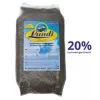
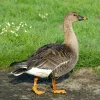

Floatable special rearing feed for all types of aquatic ornamental fowl - especially for the cultivation of trees as well as greening ducks.
This well-balanced complete feed with 20% protein content convinces above all by its good compatibility and forms the basis for visibly healthy growth from day one.
Made exclusively from wholesome and selected raw materials, Lundi Micro Regular is also ideally suited for the year-round feeding of waterfowl.
- Maintenance food:
-


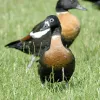


Floating full food for all sea ducks, green ducks, eider ducks and geese, especially in the moulting and breeding phase ideally suited. Packed with wholesome raw materials, natural vitamins and trace elements, this performance food with a protein content of 30% forms the basis for lifelong vitality.
- Regulation:
- Europese soort
- Regulation:
Het is niet verboden om deze vogels te houden die van nature in Nederland voorkomen, op voorwaarde dat deze vogels in gevangenschap zijn geboren; nakweek dus. Deze vogels zijn voorzien van een gesloten pootring. Het is wel verboden om deze vogels te houden die in het wild gevangen zijn. Alleen bepaalde instanties, zoals vogelasiels en vogelhospitalen, zijn bevoegd om jonge en gewonde wilde vogels te houden. Deze bescherming van vogels wordt vormgegeven door schadelijke handelingen te verbieden zoals:het doden, verwonden, vangen, bemachtigen en met het oog daarop opsporen van vogels (art. 9 Flora- en faunawet); het opzettelijk verontrusten van vogels (art. 10 Flora- en faunawet);het beschadigen, vernielen, uithalen, wegnemen en verstoren van nesten, holen of andere voortplantings- of vaste rust- of verblijfplaatsen van vogels (art. 11 Flora- en faunawet);en het zoeken, rapen, uit het nest nemen, beschadigen of vernielen van eieren van vogels (art. 12 Flora- en faunawet).
